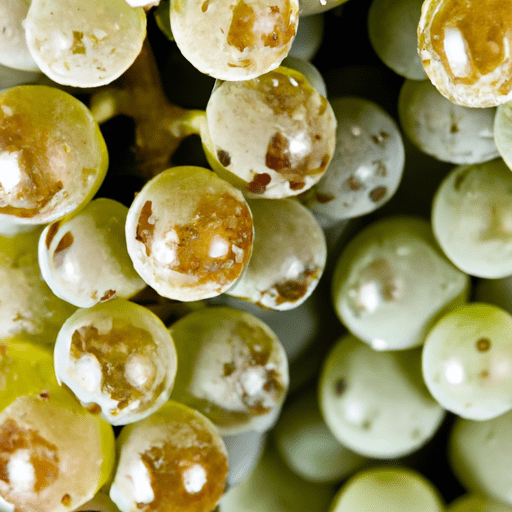The Versatile Sauvignon Blanc: From the Vineyard to the Kitchen
Sauvignon Blanc is a beloved white wine that commands attention with its crisp flavors, refreshing acidity, and vibrant aroma. While many enjoy sipping this wine during a leisurely evening, it also holds a special place in the kitchen. In this blog post, we will explore the various aspects of Sauvignon Blanc, including taste, culinary uses, nutritional value, and intriguing historical facts.
A Taste of Sauvignon Blanc
Sauvignon Blanc is known for its zesty and herbaceous flavor profile, making it an excellent choice for those seeking a refreshing and lively experience. Its prominent fruit flavors commonly include citrus notes, such as grapefruit and lemon, as well as tropical nuances of passionfruit or pineapple. Additionally, herbal undertones of freshly cut grass, green bell pepper, and even a touch of elderflower can also be detected in certain varieties. The unique combination of these flavors creates a truly dynamic and memorable taste.
Culinary Applications
The vibrant flavors of Sauvignon Blanc make it a versatile wine to incorporate into your culinary adventures. Here are a few common uses in cooking:
Marinades: The crisp and acidic nature of Sauvignon Blanc adds brightness and depth to marinades. It works beautifully with poultry, seafood, and vegetables, infusing them with its distinctive flavors.
Sauces and Reductions: The complex aroma and zingy acidity of Sauvignon Blanc play a crucial role in creating delicious sauces and reductions. From delicate beurre blanc to rich pan sauces, this wine adds a touch of elegance and sophistication to any dish.
Poaching: When poaching fish or poultry, a splash of Sauvignon Blanc lends a subtle hint of flavor and helps to keep the meat moist and tender. The wine imparts a delicate balance of acidity and fruitiness, enhancing the overall taste of the dish.
Pairing with Cheese: Sauvignon Blanc’s vibrant acidity cuts through the richness of various cheeses, making it an ideal companion during cheese tastings or as an ingredient in cheese-based recipes.
Nutritional Value
Aside from its taste and culinary versatility, Sauvignon Blanc also offers some nutritional value. Here are a few key aspects:
Calorie Content: A standard glass (5 ounces/150 ml) of Sauvignon Blanc typically contains around 120-130 calories. As with any alcoholic beverage, moderation is key to enjoying its benefits.
Resveratrol: Like many red wines, Sauvignon Blanc contains resveratrol, a compound known for its potential health benefits. Resveratrol is associated with antioxidant and anti-inflammatory properties, which may contribute to overall well-being when consumed in moderation.
Historical Facts
Sauvignon Blanc’s history dates back centuries, originating in the famed French wine region of Bordeaux. The grape varietal is believed to have received its name from the French words “sauvage” (wild) and “blanc” (white), alluding to its wilder flavor profile compared to other white wines.
Over time, Sauvignon Blanc’s popularity spread worldwide, finding a new home in the Marlborough region of New Zealand, which is now renowned for its vibrant and distinctive Sauvignon Blanc wines.
Sauvignon Blanc is not only a delightful wine to savor, but it also offers a range of exciting possibilities in the kitchen. With its zesty flavors and versatility, this wine can elevate your culinary creations to new heights. So, the next time you reach for a bottle of Sauvignon Blanc, consider exploring its potential beyond the wine glass and into the realm of culinary excellence. Cheers to the adventurous spirit of Sauvignon Blanc!
Note: Moderation is always key when consuming alcoholic beverages. Please ensure responsible and legal drinking practices are followed.
Facts about Sauvignon Blanc:
Origin: Sauvignon Blanc is a white wine grape variety that has its origins in the Bordeaux region of France. It is believed to have originated from a spontaneous cross between the grape varieties Savagnin (known as Traminer in Germany) and Chenin Blanc.
Common Uses: Sauvignon Blanc is primarily used to make dry white wines. It is known for its vibrant and refreshing flavors, which often include notes of citrus, green apple, grass, and herbs. The wine can range from bone-dry to slightly sweet, depending on the winemaking style. Sauvignon Blanc is also occasionally used to produce sparkling wines.
Nutritional Benefits: As with other wines, Sauvignon Blanc is low in calories and contains no fat or cholesterol. It does, however, provide small amounts of a variety of vitamins and minerals, including potassium, phosphorus, and antioxidants such as flavonoids.
Unique Properties: Sauvignon Blanc is known for its distinctive aroma, which can sometimes remind people of freshly cut grass or tropical fruits. This grape variety tends to maintain its acidity even when fully ripe, giving the resulting wines a bright and crisp character. In addition, some Sauvignon Blanc wines may develop ‘cat pee’ or ‘gooseberry’ notes, which are considered acceptable characteristics and part of the wine’s charm.
Historical Significance: Sauvignon Blanc has a long history, dating back to the 18th century in Bordeaux, France. Over time, it has spread to other regions around the world, such as New Zealand, Marlborough, California, and South Africa, where it has thrived and produced distinct expressions of the grape. Today, Sauvignon Blanc is one of the most widely planted white grape varieties globally and continues to be highly popular among wine enthusiasts.




Use the share button below if you liked it.
It makes me smile, when I see it.